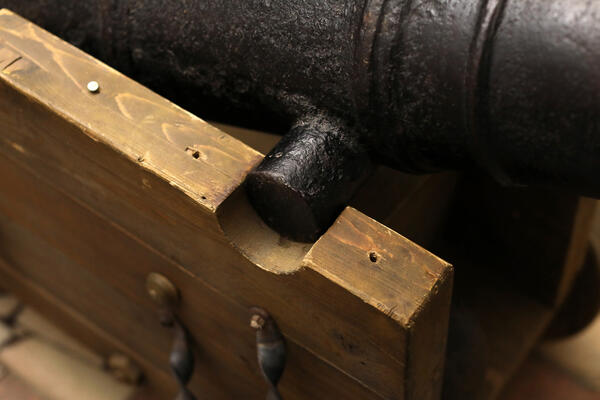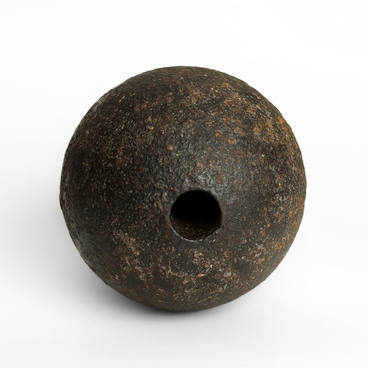A gun carriage is a mount which supports an artillery piece, allowing it to be fired.
There were wheeled or portable carriages, which could be used both for firing and transporting guns over long distances. These included field, siege, and fortress gun carriages, as well as some mortar carriages. In addition, there were semi-stationary and stationary gun carriages.
Wheeled carriages were first used in the late 15th century. A cannon was placed on a wooden frame. It was attached to the backing of the carriage trail (its rear end), just above the wheel shaft. A trunnion, a short cylindrical axle protruding from the carriage, could be used to adjust the angle of elevation. There were two methods of doing so. In the first method, a wooden arch was used, and its position was fixed with a pin that passed between the arch and the mount. In the second method, the cradle was held in place by a wedge at the rear of the breech.
Pugachev’s soldiers made and modified gun carriages, shortening them for use on sleds and adding a swivel wheel to mount the gun barrel, allowing for circular firing. Craftsmen could also create cannons using cast iron or iron-bound wooden tubes.
In order to aim a gun at a target and move it from one location to another, the gun barrel was mounted on a carriage. The carriage consisted of two interconnected parts: a platform and a trail. Earlier carriages typically consisted only of one element. They were known as block carriages.
A full-size fortress has been reconstructed on the Red Mountain near the Saraktash village in Orenburg Oblast. In 1998, a movie was filmed there. It was a Russian-French historical melodrama titled “The Captain’s Daughter”. Exploring the events of the peasant rebellion, the movie was based on Alexander Pushkin’s eponymous novel and his monograph “The History of Pugachev”.
At the end of the filming, the sets were transformed into the Landscape and Ethnographic Museum of the Orenburg Cossacks. Approximately 2,000 costumes were created for the film, including headdresses. Many items were donated to the museums in Orenburg and the region. Among these items was the gun carriage that is now on display at the museum.




